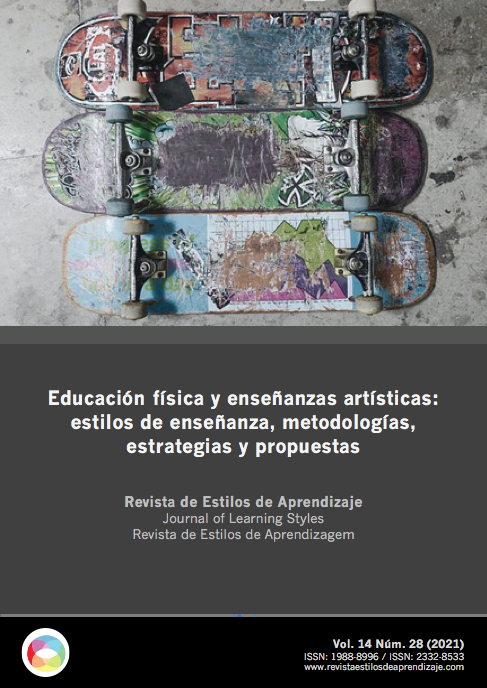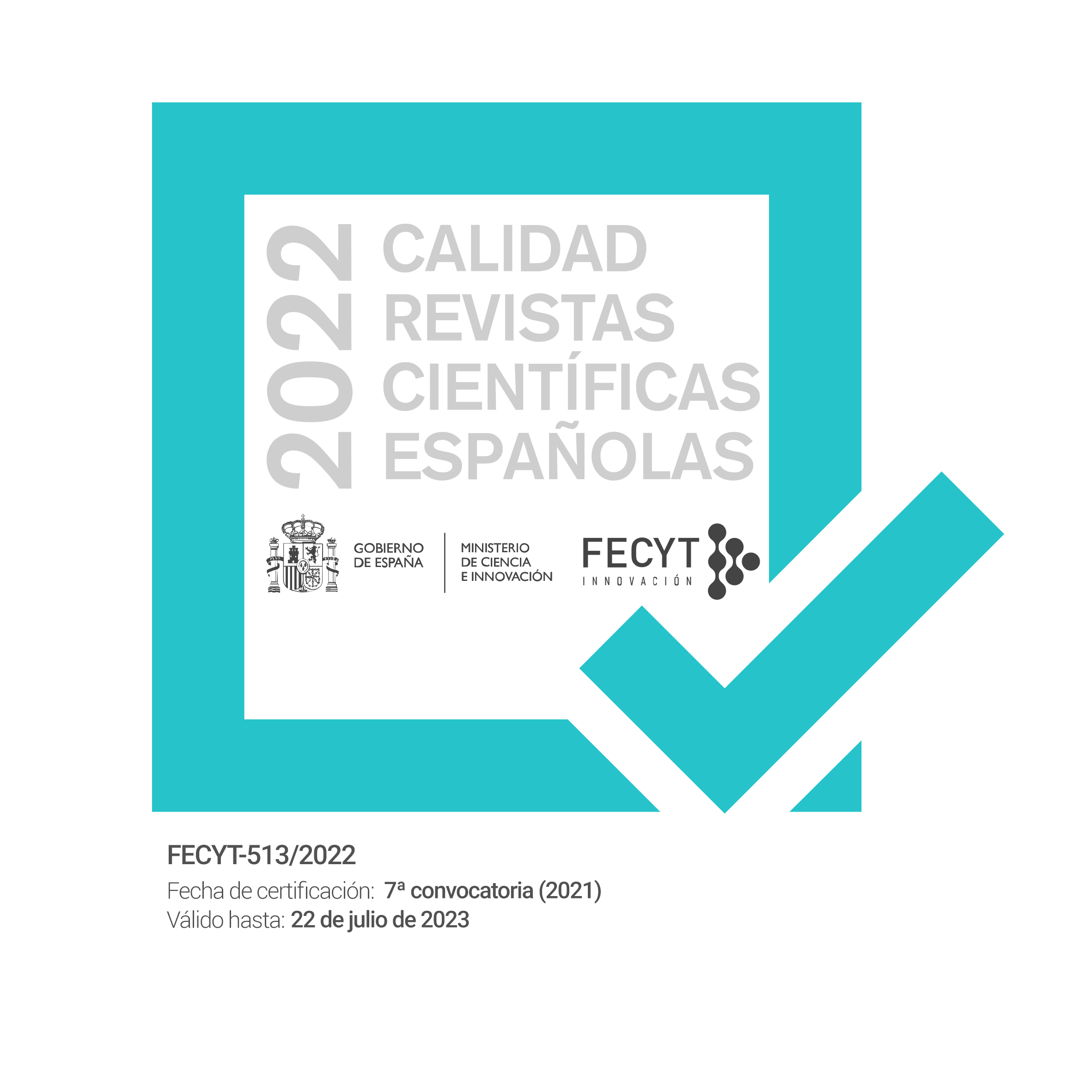Learning styles and volitional strategies in upper secondary school students
DOI:
https://doi.org/10.55777/rea.v14i28.2791Keywords:
Estilos de aprendizaje, Estrategis volitivas, Nivel medio superiorAbstract
High school students drop out their studies due to lack of motivation, identity with their institutions and way of being instructed. For the necessary educational training of students, it is not enough to consider the cognitive aspects; it is also required to develop the motivational and affective aspects of their learning style. So that students can persist in the face of difficulties and challenges to achieve their academic goals. The objective of this quantitative, non-experimental, cross-sectional, descriptive study with a sample of 218 high school was to identify the volitional strategies that students use according to their learning style. It intended to answer the research questions: What is the predominance of learning styles of NMS students? What are the volitional strategies used by students? What are the volitional strategies that predominate in each of the learning styles? The results showed a predominance of the theoretical style. Students employ more frequently the negative base incentive strategy. The researchers concluded that there is much work to be done in research focused on the study of volitional strategies and learning styles that refer to people's integral development.
Downloads
References
Abdullah, M., Daffa, W. H., Bashmail, R. M., Alzahrani, M. y Sadik, M. (2015). The impact of learning styles on learners' performance in an E-learning environment. International Journal of Advanced Computer Science and Applications, 6(9), 24-31. doi: https://doi.org/10.14569/IJACSA.2015.060903
Afzaal, S., Siau, N. Z. y Suhali, W. S. H. (2019). Evaluating students’ personality and learning styles in higher education: Pedagogical considerations. International Journal of Learning, Teaching and Educational Research, 18(7), 145-164. doi:
https://doi.org/10.26803/ijlter.18.7.10
Alonso, C. M., Gallego, D. J. y Honey, P. (1997). Los estilos de aprendizaje: procedimientos de
diagnósticos y mejora (7ª. ed.). Bilbao, España: Mensajero.
Baez-Estradas, M. y Alonso-Tapia, J. (2017). Training strategies for self-regulating motivation and volition: effect on Learning. Anales de Psicología, 33(2), 292-300. doi: https://doi.org/10.6018/analesps.33.2.229771.
Birgili, B., Nevra, F. y Kiziltepe, Z. (2019). Investigating the Relationship between Volitional Strategies and Academic Achievement in a Flipped Learning Environment. Croatian Journal of Education, 21(1), 345-375. doi: https://doi.org/10.15516/cje.v21i1.3006.
Bhattacherjee, A. (2012). Social science research: Principles, methods, and practices. Flórida, EUA: Scholar commons. Recuperado de: https://bit.ly/2WXcMTJ
Broc Cavero, M.A. (2012). Influencia relativa de variables metacognitivas y volitivas en el rendimiento académico de estudiantes de bachillerato (LOE). Revista electrónica de orientación y psicología, 23 (3), 63-80. Recuperado de: https://bit.ly/3pF7wAw
Broc Cavero, M.A. (2015). Voluntad para estudiar, regulación del esfuerzo. Revista de investigación educativa, 29 (1), 171-185. Recuperado de: http://bit.ly/34ZqaLP
Camacho, R. C. R., Ortíz, J. F. Z. y Rodríguez, A. L. (2016). Los estilos de aprendizaje y la comprensión lectora a través del uso del hipertexto en estudiantes de bachillerato. Revista De Estilos De Aprendizaje, 9(18). Recuperado de: http://bit.ly/3hybND2
Corno, L. (1993). The Best Laid Plans: Modern Conceptions of Volition and Educational. Educational Research Associations, 22 (2), 14-22. doi: https://doi.org/10.3102/0013189X022002014
Gaeta, M. L. (2009). La autorregulación del aprendizaje: la estructura del aula, la orientación
metas y las estrategias volitivas y metacognitivas en escolares adolescentes. Universidad de
Zaragoza, España. Recuperado de: https://bit.ly/3aU2PPn
Gaeta, M.L. y Herrero, M.L. (2009). Influencia de las estrategias volitivas en la autorregulación
del aprendizaje. Estudios de Psicología, 30 (1), 73-88. Recuperado de: http://bit.ly/38NGNLr
Hernández Sampieri, R., Fernández Collado, C., y Baptista Lucio. P. (2014). Metodología de la investigación (6 ed.). McGraw Hill Education.
INEE. (2017). Directrices para mejorar la permanencia escolar en la educación media superior.
INEE. Recuperado de: https://bit.ly/2LeiCxp
Keefe, J. W. y Ferrell, B. G. (1990). Developing a defensible learning style paradigm.
Educational leadership, 48(2), 57-61. Recuperado de: http://bit.ly/3iy13DD
McCann, C. & García, T. (1999). Maintaining Motivation and Regulating emotion:
measuring individual differences in academic volitional strategies. American
Educational Research Association, 11(3), 259-279. doi: https://doi.org/10.1016 / S1041-6080 (99) 80003-X
Lorenzo Quiles, O. y Zaragoza Loya, J.E. (2014). Educación Media y Superior en México: análisis teórico de la realidad actual. Dedica revista de educação e humanidades, 6, 59-72. Recuperado de: https://bit.ly/3n4zap4
Lugo, C.S.J., Hernández, G.R., & Montijo, E.L. (2012). El cuestionario de estilos de aprendizaje CHAEA y la escala de estrategias de aprendizaje ACRA como herramienta potencial para la tutoría académica. Journal of Learning Styles, 5(10), 136-154. Recuperado de:
Ramírez Gallegos, E.N., Lozano Rodríguez, A. y Zárate Ortiz, J.F. (2017). Los estilos de aprendizaje y el rendimiento académico en estudiantes de cuarto semestre de bachillerato. Revista De Estilos De Aprendizaje, 10(20), 182-219. Recuperado de: http://bit.ly/2WZxbHT
Pourrajab, M., Rabbani, M., & Kasmaienezhadfard, S. (2014). Different effects of stress on male and female students. Online Journal of Counseling & Education, 3(3), 31-29. Recuperado de:
Pupo, E. A. y Torres, E. O. (2010). La caracterización de perfiles de estilos de aprendizaje
en la educación superior, una visión integradora. Revista de Estilos de aprendizaje, 3(5), 26-41. Recuperado de: https://bit.ly/3n20LqP
Questionpro. (2021). Calculadora de muestras. Recuperdado de: https://www.questionpro.com/es/calculadora-de-muestra.html.
Quintanal, F. (2017). Estudio de caso con estudiantes de física y química de bachillerato: estilos de aprendizaje, ciencia y publicidad. Revista De Estilos De Aprendizaje, 10(20). Recuperado de: http://bit.ly/3rL9T6X
Rodríguez, G. M.S. y Gaeta, G. M.L. (2020). Estrategias volitivas en estudiantes de Bachillerato: consideraciones para la práctica educativa. Revista Panamericana de Pedagogía. Saberes y Quehaceres del Pedagogo, 29, 111-131. Recuperado de: https://bit.ly/38Wj4ca
Saccone, M. (2020). La asistencia a clases de los estudiantes en la educación media superior. Aportes desde una investigación etnográfica en la Ciudad de México. Revista Latinoamericana de estudios educativos, L (2), 55-88. Recuperado de: https://bit.ly/380KDBK
SEP. (2019). Principales cifras del sistema educativo nacional. México: SEP. Recuperado de: https://bit.ly/3ee27w0
Sudria, I. B. N., Redhana, I W., Kirna, I M. y Aini, D. (2018). Effect of Kolb's Learning Styles under Inductive Guided-Inquiry Learning on Learning Outcomes. International Journal of Instruction, 11(1), 89-102. Recuperado de: https://doi.org/10.12973/iji.2018.1117a
Tordecilla González, J. P., Nuñez, B. A. y Dávila, C. M. G. (2017). Estilos de aprendizaje en estudiantes de educación media y su relación con el desempeño en las pruebas Saber 11. Revista De Estilos De Aprendizaje, 10(20). Recuperado de:
Valenzuela, J. (2009). Características psicométricas de una escala para caracterizar el Sentido del Aprendizaje Escolar. Universitas Psychologica, 8(1), 49-60. Recuperado de:
Yeop, M. A., Wong, K. T. y Goh, P. S. C. (2016). Blended learning: pedagogy, learning styles, and assessment activities in the classroom. International Journal of Advanced and Applied Sciences, 33(11), 36-39. Recuperado de: https://bit.ly/2L7ygLh
Downloads
Published
How to Cite
Issue
Section
License
By submitting the original, the author(s) declare that they are aware of and accept, in full, the privacy policy as well as the copyright of the Learning Styles Magazine.
The Learning Styles Magazine offers free and open access to its content, completely free of charge, in order to bring scientific research to its readers and society in general. All digital contents are free and open access and are published under a Creative Commons license:

Rights are granted under the Creative Commons Reconocimiento-NoComercial-SinObraDerivada 4.0 Internacional (CC-BY-NC-ND 4.0)
The Learning Styles Magazine is an open access journal. Publication of articles or reviews in the Journal does not entitle you to any remuneration. For authors as well as readers, the journal is free Creative Commons Reconocimiento-NoComercial-SinObraDerivada 4.0 Internacional (CC-BY-NC-ND 4.0).
With this licence, the reproduction and dissemination of the contents of the magazine for educational, social and knowledge transmission purposes is permitted, without any profit motive in mind, provided that the source and authorship are not modified. The licence granted to Learning Styles Magazine allows the copying and distribution of the magazine's contents, as long as the authorship of the work is recognised, correctly specifying the author and the publishing entity. The work may not be used for commercial purposes, nor may it be altered, transformed or generated from this work.
The publication of articles or reviews in the Journal does not give the right to any remuneration.
The Learning Styles Journal invites the author/authors to increase the visibility and scope of their articles published by re-disseminating them in:
- Web spaces and personal networks, as well as in scientific meetings and forums
- Open institutional archives in Universities, educational repositories and Research Centres.
- Academic and scientific networks (Researchgate, Academia.edu, Plubons, etc.)
All these spaces and publications must include all the bibliographic data of the publication.

























